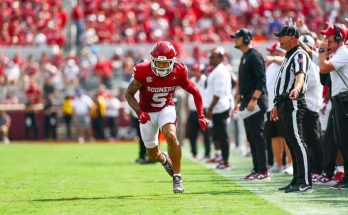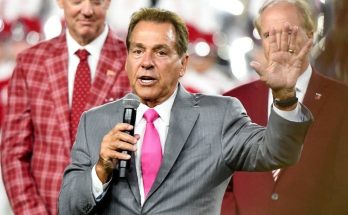The Milwaukee Bucks have made a stunning move that has already sent shockwaves rippling across the NBA landscape, parting ways with head coach Doc Rivers in a decision that many around the league didn’t see coming this soon. According to multiple league sources, the firing was the culmination of rising tensions within the organization, with one insider specifically pointing to the front office’s frustration over Rivers’ inability—or perhaps unwillingness—to properly utilize Thanasis Antetokounmpo in the team’s rotation. While firing a coach midseason is never without drama, the circumstances surrounding Rivers’ departure appear to be far more layered than simply the Bucks’ record or on-court struggles, and this move has already ignited widespread debate about player roles, internal politics, and the balance of power within a team built to contend for a championship.
Doc Rivers was brought in with the expectation that his veteran coaching acumen, proven leadership, and history of managing star-studded rosters would help the Bucks maximize their championship window with Giannis Antetokounmpo at the peak of his powers. The front office saw him as someone who could stabilize a team that had shown flashes of dominance but had also stumbled in key playoff moments. Milwaukee’s brain trust envisioned a coach who would blend experience with adaptability, who could navigate the pressures of coaching a small-market team with massive expectations, and who could effectively manage not just the superstar centerpiece in Giannis, but also the intricate dynamics of a roster that included a mix of seasoned veterans and developing role players. That vision, however, began to fray sooner than anticipated.
According to the insider who spoke under condition of anonymity, one of the more surprising points of contention was the handling of Thanasis Antetokounmpo’s role. While to many casual observers, Thanasis’ presence on the roster might be seen as symbolic—more about locker room energy, camaraderie, and family ties than significant on-court production—the Bucks’ front office reportedly viewed him as a more integral piece than Rivers was willing to acknowledge. The same source indicated that members of the organization felt Thanasis’ defensive hustle, ability to inject pace, and versatility in certain matchups were being undervalued. In short, they believed he had a niche role to play, particularly in games where energy shifts and matchup exploitation could swing momentum. Rivers, however, seemingly resisted integrating him into regular rotations, often favoring more traditional bench units that did not include him in meaningful minutes.
This difference in philosophy became an undercurrent of friction behind closed doors. While it’s rare for the role of a bench player—especially one averaging minimal points per game—to become a flashpoint for organizational tension, the situation with Thanasis is unique. His relationship with Giannis is well known, and beyond their brotherly bond, there’s an emotional heartbeat he provides to the team that the front office clearly valued. By not giving Thanasis opportunities they deemed deserved, Rivers not only clashed with a segment of the decision-makers but also, in their eyes, risked disrupting the harmony of a locker room that thrives on unity and collective buy-in.
Compounding the problem was the fact that the Bucks’ play under Rivers often looked uneven. While Milwaukee still won games, there was a growing sense among insiders and fans alike that the team lacked a clear identity. Some nights they were a defensive juggernaut capable of suffocating opponents; on others, defensive rotations broke down entirely, leading to inexplicable losses. Offensively, stretches of stagnant ball movement plagued them, and the free-flowing attack that the organization hoped Rivers would foster often devolved into isolation-heavy possessions. In the eyes of the front office, if the product on the floor wasn’t consistently elite, there was little reason to tolerate philosophical differences over roster utilization—especially when those differences touched sensitive relational dynamics.
The tipping point, according to those close to the situation, came after a recent stretch of games in which the Bucks struggled to close out lesser opponents. The pattern wasn’t just about the scoreboard but about how the team was executing and responding to adversity. Front office members reportedly observed a noticeable lack of spark in certain second-unit stretches, stretches in which they believed inserting Thanasis could have changed the energy and pace. These missed opportunities for momentum shifts became a focal point in internal discussions, with the narrative forming that Rivers was not making full use of all the tools available to him. Even if Thanasis wasn’t a statistical difference-maker, the front office felt that his intangibles—intensity, relentless defense, bench leadership—were assets that could not be ignored in a season with razor-thin margins.
It is worth noting that the situation is nuanced and that Rivers himself likely had legitimate reasons for his rotational choices. Coaches are constantly weighing matchups, floor spacing, and chemistry, and Rivers has always been known for his loyalty to veteran structures and his preference for lineups he trusts defensively. Thanasis, while an energy player, has offensive limitations that can make him a liability in certain scenarios. For Rivers, sticking to rotations that preserved offensive rhythm may have seemed like the more pragmatic choice, even if it conflicted with the front office’s vision. However, in the NBA, perception often carries as much weight as reality, and the perception inside the Bucks’ hierarchy was that Rivers was not fully on board with the organizational philosophy.
From a broader perspective, the firing raises important questions about the state of the Bucks’ franchise and their approach to maximizing the Giannis era. The decision to part ways with Rivers over, at least in part, the handling of a role player underscores just how carefully the organization is curating not only its basketball strategy but also its culture and interpersonal dynamics. It also reinforces the notion that in today’s NBA, success is measured not just in wins and losses but in the delicate balance between coaching autonomy and front-office vision. This balance can be especially volatile when the team’s most important player has deep personal ties to someone whose role is being debated.
The reaction around the league has been mixed. Some executives have quietly questioned whether firing Rivers over Thanasis’ usage sets a concerning precedent, suggesting that it may embolden front offices to micromanage rotations. Others see it as an example of a franchise making an unwavering commitment to player chemistry and star satisfaction, something that could pay dividends in retaining Giannis long-term. Analysts have also pointed out that the Bucks are in a championship-or-bust phase, which means every decision, from roster moves to play-calling, is magnified. If the front office felt that even small misalignments were jeopardizing that goal, then decisive action—no matter how unconventional—might have been inevitable.
For Rivers, this marks another abrupt ending in what has been a high-profile but often turbulent coaching career. He remains a respected figure with a championship pedigree, but his stints with recent teams have sometimes been marked by postseason disappointment or philosophical clashes with management. Whether he quickly returns to another head coaching role or steps back to reassess remains to be seen, but his departure from Milwaukee will inevitably become a case study in how off-court dynamics can be just as critical as on-court performance.
As for the Bucks, the immediate focus shifts to finding a replacement who not only brings tactical acumen but also fully aligns with the organization’s holistic vision of team building. That means embracing not just the obvious stars like Giannis and Damian Lillard but also valuing the unique contributions of role players—both measurable and intangible. Whoever steps in next will inherit a team with championship aspirations and the pressure to deliver immediately, knowing that the margin for error in Milwaukee’s front office is now razor-thin.
In the end, the firing of Doc Rivers is about far more than a disagreement over minutes for a bench player. It’s about the complex web of expectations, relationships, and philosophies that define elite-level sports. It’s about a franchise determined to protect its culture while chasing titles. And it’s about the sometimes-uncomfortable truth that in the NBA, success depends on the ability of coaches and executives to see not just the X’s and O’s, but the people behind them—and to find a way to make every piece of the puzzle fit. In Milwaukee, that fit simply wasn’t there anymore, and now the Bucks will attempt to move forward, hoping that this bold and surprising decision will ultimately bring them closer to the championship they crave.


